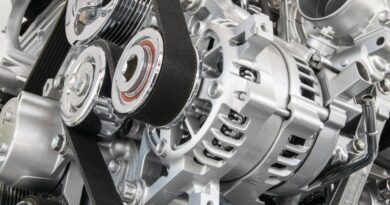Human Mindset Is the Real Barrier to AI’s Future: Kunal Shah
Why Human Mindset Is Holding Back the Future of AI
Imagine a world where artificial intelligence (AI) isn’t just a tool we use but a natural part of our daily lives. Sounds amazing, right? Yet, according to Kunal Shah, the founder of CRED, one major thing stands in the way: the human mindset.
Let’s dive into why the way we think is the real barrier to AI’s future—and what we can do about it.
Technology Is Advancing, So What’s the Problem?
Every few months, we hear about a new AI breakthrough. From smart assistants to self-driving cars, technology keeps getting better. And yet, many people still hesitate to embrace these changes fully.
Kunal Shah puts it simply: while the hardware and software evolve quickly, the human mind struggles to keep up.
Think about it. Even though we now have smartphones that are more powerful than old computers, how many of us still treat them mainly as calling devices? It’s not about what the tech can do. It’s about what people are willing—or ready—to do with it.
Why Humans Are the Bottleneck
So, why is our mindset such a big issue when it comes to AI adoption? Here are a few reasons:
- Fear of Change: Many of us naturally resist new ways of doing things because they’re unfamiliar.
- Lack of Trust: People worry about AI making mistakes or taking over jobs.
- Comfort with the Old Ways: If something isn’t broken, why fix it?
Think back to when online banking first became popular. It took years before people fully trusted it. The same is happening with AI, but we can’t afford to drag our feet this time.
It’s Not Just About Smarter Computers
Most people think AI’s future depends on having better machines, faster networks, and stronger software. While that’s true to a point, Shah believes the real challenge is much deeper.
It’s about changing how we think about work, creativity, and decision-making.
Picture this: a tool that could easily handle 80% of your daily chores. Would you immediately trust it? Or would you worry it might mess up?
This hesitation slows progress, no matter how “smart” the tech becomes.
Example: Trusting AI with Health Decisions
Take healthcare, for instance. AI can now detect diseases from scans better than many human doctors. Still, would you be comfortable having an AI diagnose you? Many people would want a second opinion from a human, even if the AI’s success rate is higher.
This shows that even proven technology isn’t enough without a shift in people’s mindset.
AI Needs a New Kind of Collaboration
Shah points out another important idea: AI is not here to replace us. It’s here to amplify what we can do.
Instead of thinking of AI as a competitor, we should see it as a collaborator.
Here’s a simple way to look at it:
- AI + Human = Superhuman Outcomes
For example, an AI can quickly process billions of pieces of data. A human can apply empathy, judgment, and creativity to those results. Together, they can create something better than either could alone.
Changing How Businesses Think About AI
Most companies still view AI with skepticism. They either completely outsource tasks to AI without oversight or fear using it at all. Neither approach works well.
Successful businesses are starting to:
- Train employees to work with AI, not against it
- Encourage experimentation without fear of failure
- Create a culture of trust between people and technology
Your business strategy should not be “replace people with AI” but “empower people using AI.”
Mindset Shift: The Biggest Upgrade We Need
Even though AI tools are getting better by the day, their real success depends on how people use them.
Here’s how you can start shifting your own mindset:
- Stay Curious: Instead of fearing new tech, explore it. Ask yourself how it can help, not hurt, you.
- Focus on Collaboration: Treat AI like a team member, not a threat.
- Trust But Verify: Use AI solutions but continue applying human judgment.
Changing your mindset isn’t easy. But remember, you’ve done it before—maybe when learning to use a smartphone or trusting GPS over asking for directions.
Are You Ready to Embrace AI?
Ask yourself:
– Can I see AI as a partner in my daily life?
– Am I willing to learn and adapt as AI evolves?
– How can I use AI to improve my work and creativity?
The future belongs to those who stay flexible, not the ones who cling to the past.
Final Thoughts: Building a Future Together
Kunal Shah reminds us that to unlock AI’s true potential, we can’t just focus on better machines. We must also upgrade our thinking.
AI will not come and “fix” problems for us while we sit back. It’s more like getting a gym membership—you still have to do the work to see results.
Your mindset is your greatest asset, or your biggest barrier.
So, the next time you hear about a new AI tool, don’t just ask, “Will it replace me?” Instead, ask, “How can I use it to get better?”
This simple shift could be the difference between being left behind or thriving in the AI-powered world ahead.









